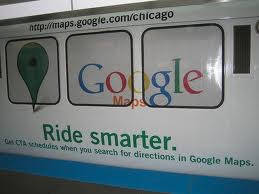Carless-Day Five -OutSmart

The DC Metro area has consolidated busses and subway trains into one fare system, so the Montgomery County Maryland bus that shuttles me to the Takoma Metro in DC both accept the same electronic fare card, so does the Arlington (Virginia) bus I hopped today, which dropped me off two blocks from the White House, where I seamlessly transferred to the subway home.
Not every city’s transportation infrastructure is so well integrated. Winter before last, I facilitated a meeting at Argonne National Laboratory in the Chicago suburbs. I stayed with friends who live “nearby” before and after the gig, but over-nighted on the Argonne campus while facilitating. Since more than half of Argonne’s funding comes from doing studies on the future of transportation, I figured I’d take public transportation to and from the gig. My friend Dan laughed at my suggestion.
“But this meeting’s about the future of transportation,” I argued. “I can’t show up in a rental car or a cab, can I?”
“It would be the wiser choice,” Dan counseled.
I stuck to my guns, though Dan had to drive me about fifteen miles to the train station to start my journey. He explained that Chicago-land features a hub and spoke public transportation infrastructure that presumes everyone commutes into the city center, not laterally between ‘burbs. Further, the spokes are owned by different companies. There’s a commuter train station just a couple of miles from Dan’s house, but to get to Argonne from there, Dan reported that I’d have to ride clear downtown on that spoke, then hike to the competing train station to ride halfway back out on another spoke, where Argonne’s located.
I hopped off the commuter train at the right station and started searching for the bus stop, knowing I had a very short time before the once an hour bus arrived. It wasn’t really snowing that hard, though the wind was brisk. Visibility was poor. I found the bus stop by accident because there were no signs directing me. I managed to get on the right bus going the wrong way, which was my fault. I felt too shy to ask, schlepping my roll-away suitcase and knapsack, so I missed the opportunity to catch the right bus going in the right direction.
I decided to just stay on the right bus going in the wrong direction, since it would get me within a mile of Argonne, ... eventually. An hour later, the last passenger, I crawled off at a suburban strip mall and called my sponsor, who sent a post-doc to fetch me. Had I caught the right bus going in the right direction, the post-doc would have still had to get in a car to fetch me at the gate because there’s no shuttle bus on the campus of the preeminent transportation lab in the country. Jeesh!
I never did figure out what happened on the return trip on the train. The schedule my smart phone showed me didn’t match what the trains did. I asked a student waiting for the train if he understood how they worked and he admitted that though he rode them daily, he could never predict which train would go how far. Together, we rode three different trains to almost traverse the same ground I’d covered in one train ride the morning before. A train would stop at one or two stations then call it quits. We’d schlep back out onto the platform to wait for the next train, which would not stop if it was an express. The student finally called his girlfriend to drive over and collect him when he got within one stop of his destination but was stranded again. I waited and was finally rewarded with a ride, which delivered me about an hour later than both Dan and I had expected.
Dan was laughing. “Told ya,” he gloated.
I told him, after apologizing, that this experience might make one terrific story.
In most of this country, carless equals helpless. Doesn’t matter how smart your smart phone might be, it will not be able to direct you through Chicago-land on the bus or the train. This can be somewhat ameliorated if you can find your voice and ask, but you’ll need a good friend like Dan or a pocket full of cab fare to get anywhere besides straight downtown. It was designed that way.
Dan pointed out the remnants of an old trolley line that used to shuttle between train stations in the far Western suburbs. It lost right of way when they built a new freeway in the sixties, when cars were the solution instead of the root cause of the commuting problem. Now, of course, the cost of reconstruction is hard to justify, so it will continue to be just as it is there, I suppose, regardless of the clever proposals Argonne might produce.
©2012 by David A. Schmaltz - all rights reserved


